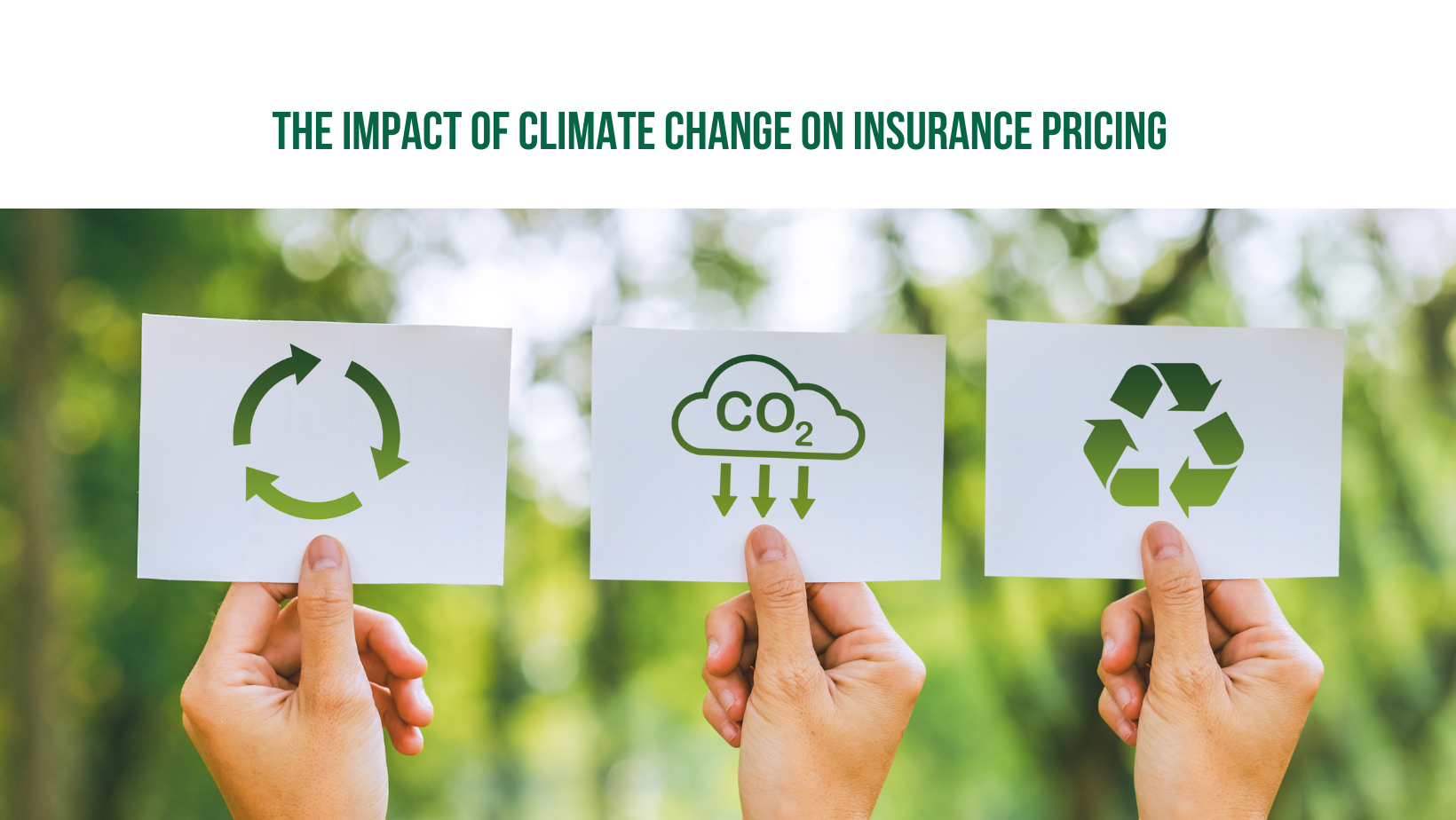As wildfires burn longer, floods reach new highs, and hurricanes become more intense, insurance companies are facing a new reality: climate change is no longer a future problem—it’s happening now. These changes are not only reshaping our environment, but they’re also rewriting how insurance policies are structured, priced, and offered.
For both individuals and businesses, understanding how climate change affects insurance is now essential to making smart coverage decisions.
Why Climate Change Matters to Insurers
Insurance works by pooling risk—many people pay premiums so that the few who suffer a loss are financially protected. But when climate-related disasters become more frequent and severe, insurers face more claims, higher payouts, and greater uncertainty.
According to a 2023 report by the National Centers for Environmental Information, the U.S. alone experienced 28 separate billion-dollar disasters, with total costs exceeding $90 billion. These extreme events strain insurers’ financial models and are pushing them to adapt or even exit high-risk markets.
Real-World Examples of Change
-
Homeowners in wildfire zones in California have seen their policies canceled or premiums skyrocket.
-
Flood-prone areas like parts of Florida and Louisiana are facing limited or no private flood insurance options.
-
In countries like Australia, some communities are now labeled “uninsurable” due to repeated bushfire and storm losses.
Insurers are re-evaluating where and how they provide coverage—and these changes affect everyday policyholders.
How Insurance Policies Are Being Reshaped
1. Premium Increases in High-Risk Areas
Properties located in wildfire zones, coastal floodplains, or hurricane-prone regions are now facing dramatically higher premiums. In some cases, insurers charge double or triple the rates compared to low-risk areas.
Why? Because actuarial data now shows a higher likelihood of loss. Insurance companies are forced to adjust their models accordingly.
2. More Detailed Risk Assessments
Insurers are using advanced climate modeling, AI, and satellite data to assess property-level risk. This means a homeowner next door to you could have a completely different premium or even be denied coverage based on slight terrain or vegetation differences.
See how Swiss Re is using climate data tools to improve risk prediction.
3. Increased Use of Exclusions and Limitations
Some policies now include climate-related exclusions, especially for flooding, landslides, or mold from moisture damage. Others may place coverage caps on wildfire damage or require higher deductibles for named storm events.
It’s more important than ever to read the fine print of your policy.
4. Push Toward Government-Supported Programs
In high-risk areas, private insurers may withdraw entirely. This leads to reliance on government programs like:
-
State-run “last resort” property insurance programs (like California’s FAIR Plan)
However, these programs often come with limited coverage, longer claims processing, and higher deductibles.
Climate Adaptation Requirements for Coverage
Some insurers now require policyholders to take mitigation steps in order to qualify for coverage or receive lower premiums. Examples include:
-
Elevating buildings in flood zones
-
Installing fire-resistant roofing
-
Clearing defensible space around homes in wildfire areas
-
Upgrading to impact-resistant windows for hurricane protection
These requirements are part of a larger industry push toward resilience and prevention, not just compensation after loss.
Businesses and Commercial Insurance
It’s not just homeowners feeling the impact. Businesses, especially those in agriculture, construction, and logistics, are seeing:
-
Rising premiums for property and casualty insurance
-
Adjusted policies for supply chain interruption
-
Exclusions for climate-related damage unless explicitly added
Climate change is now a core boardroom issue. Companies are being urged to perform climate risk assessments to ensure continuity of operations and financial protection.
What You Can Do as a Policyholder
✅ Know your risk – Use tools like RiskFactor.com to assess flood and wildfire risk for your location.
✅ Shop around – Compare both private and government-backed insurance options, especially if you live in a high-risk area.
✅ Invest in mitigation – Weather-proof your home or business to qualify for better rates.
✅ Understand policy terms – Watch out for exclusions, limitations, and changes in deductibles related to climate risks.
✅ Work with a broker – Insurance brokers can help find specialty carriers and explain climate-specific options.
Looking Ahead: The Role of Climate in Future Insurance
The future of insurance will be climate-informed by default. Expect to see:
-
Dynamic pricing based on real-time weather data
-
Parametric insurance, which pays out based on a weather trigger (e.g., wind speed), not claims investigation
-
More partnerships between private insurers and governments
-
A rise in green insurance products that reward sustainable practices
Insurers are also increasingly investing in climate resilience education to help communities prepare—not just repair.
Also Check:
- Mobile Phone Insurance: Is It Worth the Cost?
- How to File an Insurance Claim Efficiently
- Critical Illness Insurance: What You Should Know
- Insurance for High Net Worth Individuals: What You Need to Know
- The Basics of Business Insurance for Startups
Final Thoughts
Climate change is redefining what it means to be insured. For many, it will require rethinking location, investing in mitigation, and staying informed about how risk is being priced. While the industry is adapting, so must individuals.
Whether you’re renewing your homeowner’s policy or starting a business, understanding how climate affects insurance today can save you money—and headaches—tomorrow.
